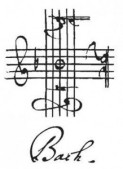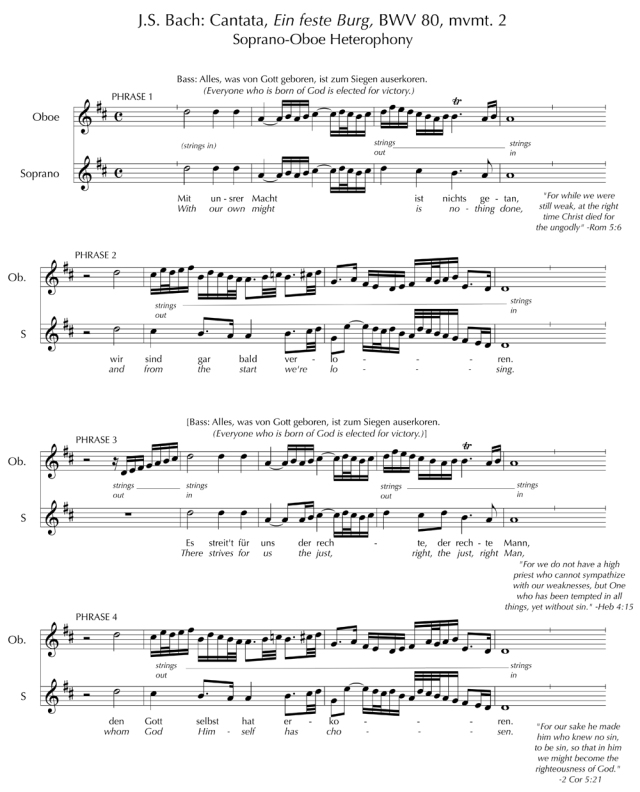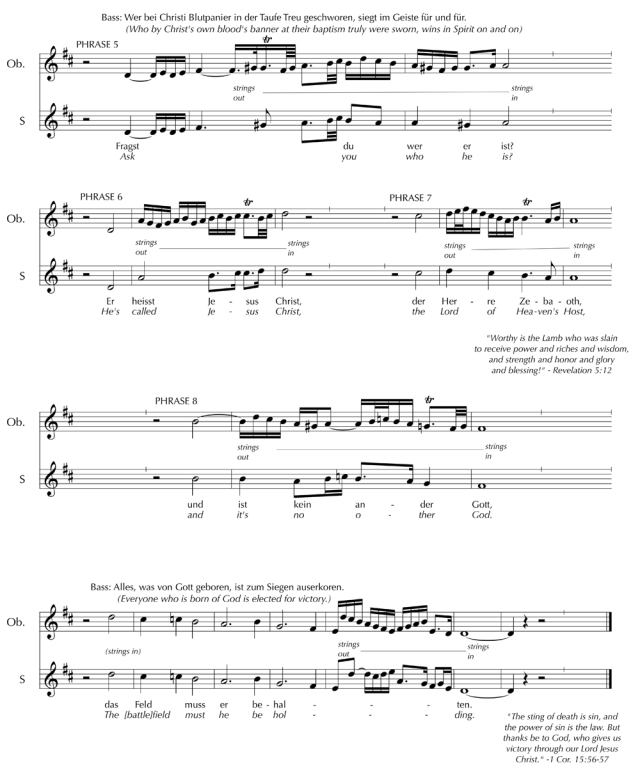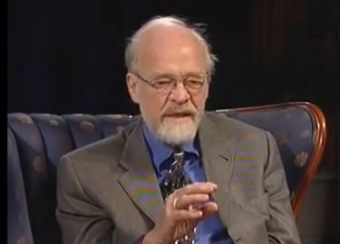[The following is an adaptation of a chapel address I gave at Northwestern College on February 21, 2014 on the subject of musical or aural spatiality.]
There is a great scene in the movie Shawshank Redemption in which the main character Andy Dufresne, who has been wrongly convicted of murder, breaks into the warden’s office from which he plays a record of Mozart’s duet “Sull’aria” from Figaro over the prison loudspeaker. All the prisoners stop dead in their tracks to listen, and as Morgan Freeman’s voice-over tells us, “for the briefest of moments, every last man at Shawshank felt free.” For this audacious act, Andy is placed in solitary confinement for two weeks. Once he is released from confinement, he has a conversation with his prisoner buddies over lunch during which he states that Mozart kept him company during those weeks.
Andy Dufresne: That’s the beauty of music. They can’t get that from you. Haven’t you ever felt that way about music?
Ellis ’Red’ Redding: Well, I played a mean harmonica as a younger man. Lost interest in it, though. Didn’t make too much sense in here.
Andy: No, here’s where it makes the most sense. You need it so you don’t forget.
Red: Forget?
Andy: That there are places in the world that aren᾿t made out of stone. That there’s… there’s something inside that they can’t get to; that they can’t touch. It’s yours.
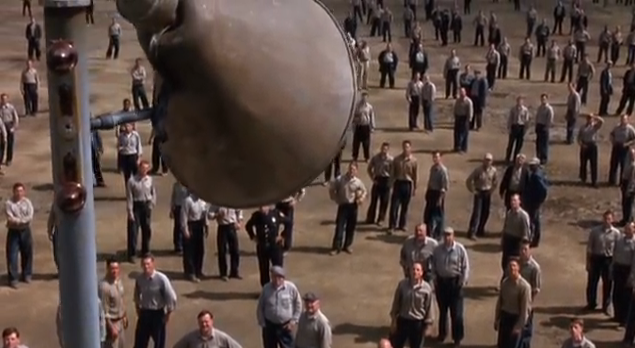
Music resides in a space not “made out of stone.” Its ability to transcend above and transport beyond the physical world is considered to be one of its greatest powers and most of us use music to varying degrees to escape from it all. I believe it has this power largely because of its own unique spatiality.
It’s a great scene in that movie, but it’s really only a copy of a true-to-life scene from nearly 2000 years ago as described in Acts 16. After being beaten with rods for preaching the Gospel, Paul and Silas were put in prison. And they prayed and sang hymns to God, and Paul tells us that the prisoners listened to them. (v.25) Of course we know that the drama that unfolded in Philippi far exceeds that of the Shawshank Redemption. Perhaps Paul and Silas drew upon the power of music to remind them that there’s something that those who beat and imprisoned them cannot touch, that there is a reality not made of stone. So let’s reflect on musical space a bit.
First, it’s a penetrating space. Let me explain what I mean by that. If I play a middle C on the piano, the sound encroaches upon your aural world (providing of course that the sound waves reach you), and occupies the totality of that space, not merely segments of it. It’s everywhere in that space. Sound penetrates our aural world in a way that sights do not penetrate our visual world. If we see a disturbing image or a work of art that we find distasteful, we can easily avert our eyes from that image. If we hear a disturbing sound, we cannot avert our ear toward some other “aural direction” so that the unpleasant sound is not heard. In this respect, sound encroaches upon our experiential world.
Physical space, being locational, implicates our separateness from the world around us. We see objects that are out there, extended from us. When we hear sounds, they engulf us almost as if they are within us.
Musical space is also an interpenetrating space. It is a spatiality in which more than one entity can occupy the same space. This fact is as remarkable as it is simple and has incredible implications. That two sounds or musical tones can occupy the same aural space with both being heard simultaneously, is a remarkable phenomenon.
Compare this with color in physical/visual space. Mixing two colors, say blue and yellow, in the same visual space is certainly possible. But in the combining of colors in the visual space, one of two things happen: either one color covers up the other or the two colors mix together to create a third color, green. When the colors combine to create a new color, the original two colors themselves are no longer seen in the visual space that is occupied by the green. But with music, we can hear multiple discrete tones simultaneously. If we take our middle C and add to it the E above, we can hear them simultaneously. The C and E do not combine to create the D that is in between them. They each retain their identities even while occupying aural space. Perhaps the most glorious illustration of interpenetrating order in aural space is polyphony. Through the combination of multiple voices our experience of aural spatiality is intensified.
Finally, musical space is a relational space. In addition to hearing the C and E penetrating our aural space simultaneously, we hear something else—we hear a relationship between these two tones. We experience this relationship musically in terms of consonance and dissonance, dissonance equating to tonal tension and consonance equating to relief of tonal tension or “harmoniousness. “The “major 3rd” interval created by the C-E dyad is consonant, one that lacks tonal tension needing release. The C and E sound harmonious together.
Now consider what happens when a G is added to our C–E dyad. Not only does the G interpenetrate the same aural space that the C and E occupies, and not only do we then hear new relationships between the G and both other tones, we hear something else happening. The three tones fuse together in a unique way, thereby creating a new harmonic entity—the “chord.” And the chord is more than simply the sum of its parts—more than the mere combining of three tones. The tones fuse together to create a singular harmonic unit, and yet each of the members of this chord retains their individual identities and can be heard in this new chord entity. Thus, the simplest of harmonic units, the chord, is a marvel to think about—a phenomenon unique to aural space.
In the musical chord we are given one of the strongest metaphors for the Trinity. Father, Son and Holy Spirit fuse beautifully together as one while each retain their unique Personhood at the same time. Like members of a musical chord, these three Persons have relationship with one another. Musician and theologian Jeremy Begbie has made similar Trinitarian reflections in relation to the musical chord, noting also that the problematic nature of the most commonly invoked Trinitarian metaphors can be avoided if we open up our reflecting minds to aural rather than physical or visual space:
What could be more apt than to speak of the Trinity as a three–note chord, a resonance of life; Father, Son, and Spirit mutually indwelling, without mutual exclusion, and yet without merger, each occupying the same space, “sounding through” one another, yet irreducibly distinct, reciprocally enhancing, and establishing one another as other? (Resounding Truth, p.293)
Application to Worship. Congregational singing then truly unifies a people. Our individual voices enter into music’s unique spatiality, and our voices interpenetrate each other. If we sing in parts creating chords, those musical objects that are greater than the mere sum of their parts, then our voices become relational to one other, pulling each other this way and that. If we sing in unison, our individual voices are lost in a unified strand of melody. In both cases we have an imaging, an “embodiment,” of the body of Christ.
And this is no mere analogy of unity, no mere illustration of unity. Music is that, but it is far more. Musical worship, when it receives the full participation of a congregation, is unity, is unifying. We enter this musical space as individuals, and as we enter, we pass from the first–person singular to the first–person plural. “I” becomes “we.”
Steven Guthrie of Belmont University, referencing Colossians chapter 3 in which the Apostle Paul commands his readers to “put on love, which binds everything together in perfect harmony, and [to] let the peace of Christ rule in your hearts, to which indeed you were called in one body,” says that singing together is an action that allows us to participate with our bodies (our voices) in a unifying act (in Resonant Witness, eds. Begbie and Guthrie, p.81). The unity of a body should not be limited to cerebral like-mindedness of doctrinal thought, as important as that is. In fact, music has power to unify those of differing ideas. The worship act unifies.
There’s one final point I want to make. In Isaiah 6, that great passage in which the prophet describes catching a glimpse of the Lord high and lifted up on his throne with the train of his robe filling the temple, the seraphim are hovering and calling out, “Holy, Holy, Holy is the Lord of hosts. The whole earth is filled with his glory.” And who are they calling out to? One might suspect that they are calling to the Lord, but they are not. They call to one another. When we worship, God is the object of our worship and the primary audience of our worship. But our audience also includes each other. When we worship, we are declaring the greatness, the mercy, the many attributes of God to one another.
Paul also emphasizes this communal aspect of worship in his letter to the Ephesians when he says “Do not be drunk with wine, for that is debauchery, but be filled with the Spirit, addressing one another in psalms and hymns and spiritual songs, singing and making melody to the Lord with your heart, giving thanks always and for everything to God the Father in the name of our Lord Jesus Christ, submitting to one another out of reverence for Christ.” (Eph 5:18-20)
When we make musical worship individualistic and private, we subvert the very nature of music and its unique potential in facilitating the rare chance of participating in the unity of the body of Christ that music uniquely affords. And this is always a temptation, because music so easily and powerfully provides us a way to “escape” from it all. And we may even tell ourselves, “If I can just forget everyone around me, I can worship better.” But while understandable, this attitude is a mistake as it fails to recognize the potential of music to unify and edify the body.
John Witvliet of Calvin College has similar concerns. He says:
“In worship, a congregation is greater than the sum of the individuals in the room. In our own era, this communal character of Christianity is under threat in the individualistic, privatistic orientation of Western culture. There are constant temptations to reduce Christianity to a private experience that avoids any sustained contact with others…. Indeed, one of the most joyfully subversive questions a liturgical artist can ask is, simply: ‘How might my artistic contribution resist individualism and strengthen the communal dimension of worship?’” (For the Beauty of the Church, ed. Taylor, p.49)
What this all means is that in corporate worship, the “performers” are not the ones on stage. The performers are the congregants. And every congregant must participate in the entering of musical space for the edification of the body. There is no Psalm that says, “Sing to the Lord all you who have great voices.” Worship is not optional.
[The chapel service was closed with the singing of “We Are God’s People” in unison followed by the singing of the Doxology in parts.]

